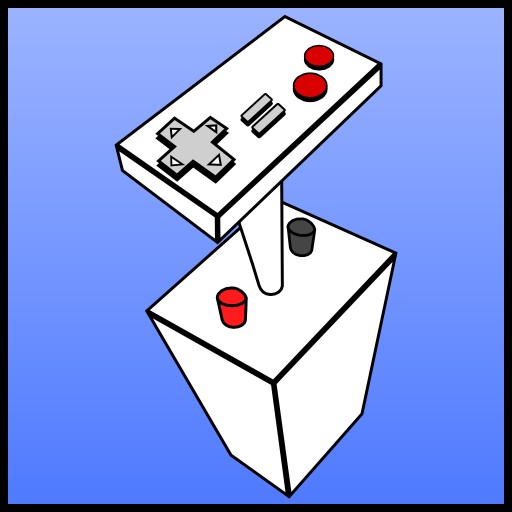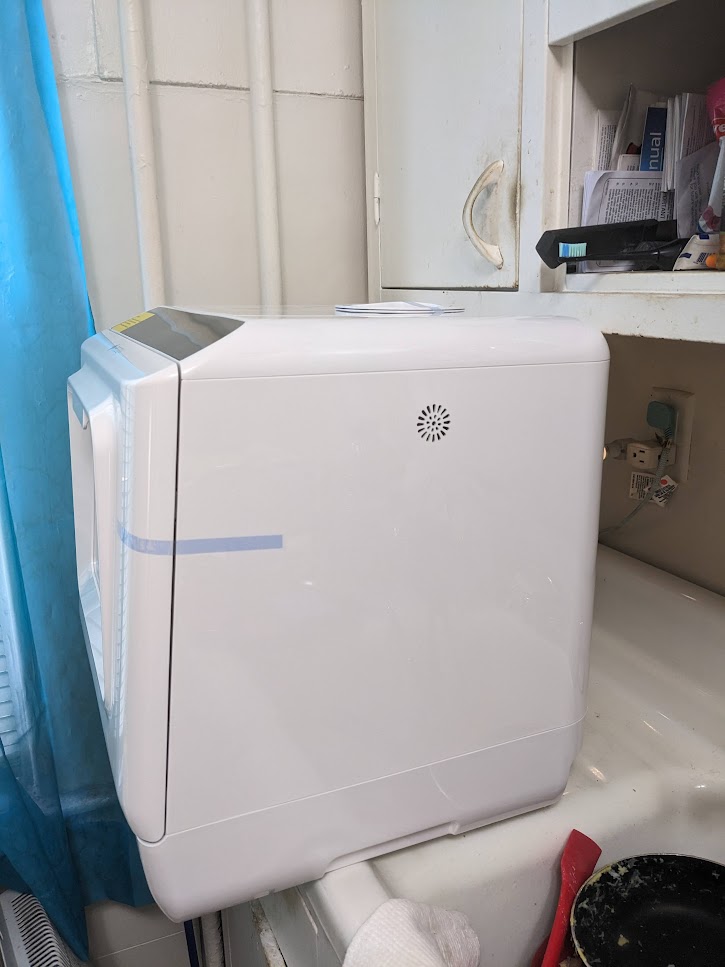
Disclaimer: I bought this product with my own money but have included an affiliate link within the article. This article reflects my own opinion of the product based on my own use.
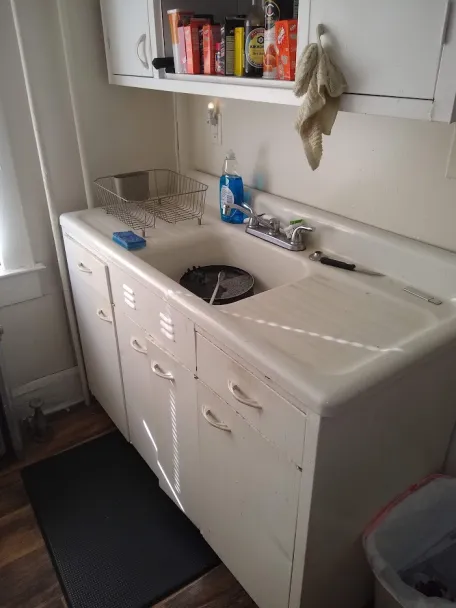
I’m not working with a lot of space in my kitchen, and the only appliances in it are the stove/oven, fridge, and microwave. So I thought there was no way I could ever have a dishwasher here (and it’s basically #1 on my wishlist whenever I go apartment hunting next). Turns out there’s a wide array of compact, countertop dishwashers available for a decent price.
I had some gift card balance left over from Christmas so I looked at a number of models. Pretty much every model had a small percentage of reviews complaining about leaks or unresolvable error codes, but this one seemed to have the lowest ratio of those and also had a coupon, making it one of the least expensive options at the time of purchase.
Four days later it arrived, and I’m ready to wash some dishes. Except: I measured for the first model I looked at, which seemed like it would fit next to the sink with a few inches to spare, but then I ultimately decided on buying a different model. And didn’t re-measure. So we have a problem.

This was pretty much the only place in the entire apartment where I had access to both a grounded outlet and a drain, so I almost started a return then and there. But then I realized there was another place: the microwave cart. This was basically right next to the sink (it is currently where the trashcan is in the first picture above) and the microwave plugged into the other grounded kitchen outlet.
So my microwave is currently living on the floor. That’s a tomorrow problem.
Unpacking the rest of the box I thought I had encountered a different problem – it was supposed to come with a fill hose, drain hose, and a couple other things. Turns out they were just packed inside the unit (makes sense).
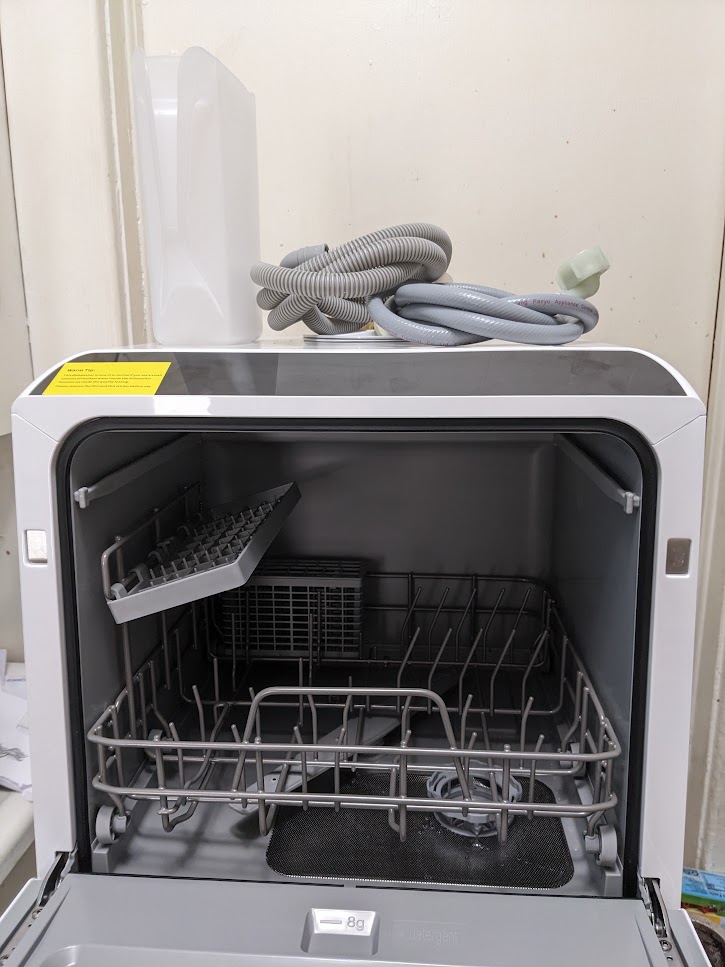
At the bottom of this picture is the detergent cup. There’s no door, it just dumps into the bottom of the dishwasher when you close the door. The pitcher is also for filling it up manually if you don’t have a hookup for the water input (it doesn’t fit on my sink, surprise). The manual actually considers this scenario in the setup instructions.
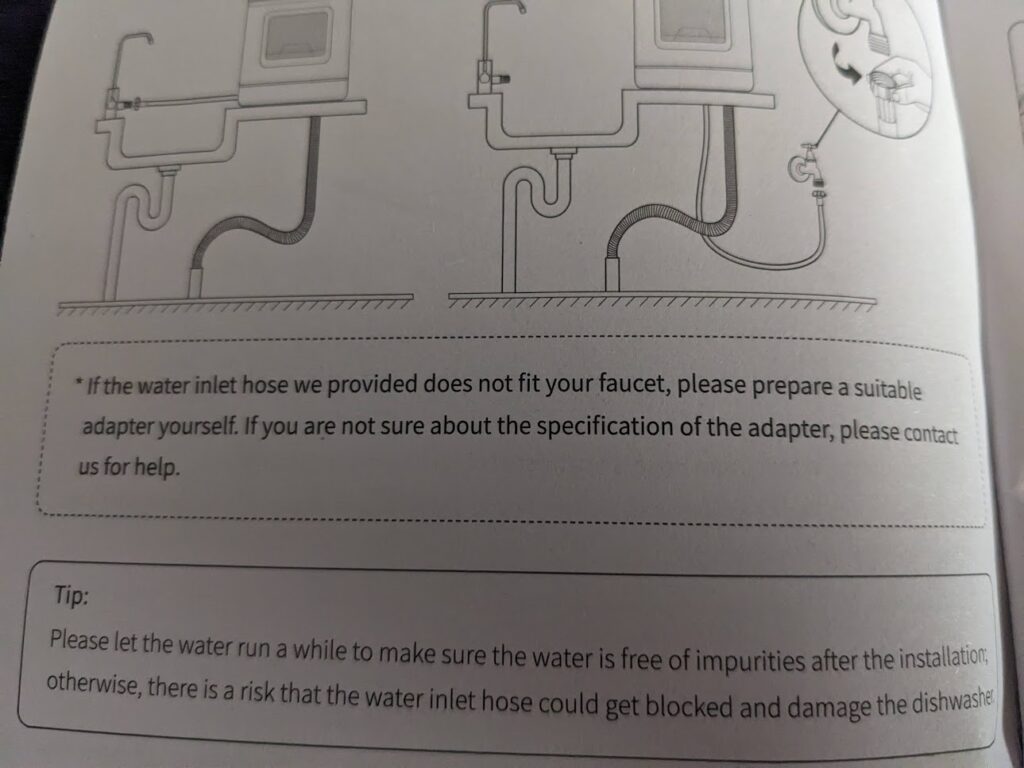
Filling it by hand is fine, it only takes about 2 1/2 pitchers worth (5L). The next problem: I’ve been washing dishes by hand for almost 6 years, I don’t have any detergent for dishwashers. One quick trip to the store later, time to load it up and give it a spin.

Here we have some glassware with some scuzz on it that has refused to come off with handwashing, some plates with stuck-on bits, and pretty much all my silverware. The machine is slightly too short for my full-sized (12 inch) plates, so I’m planning on getting some slightly smaller ones, but that hasn’t happened yet. These plates are about 8 inches. Most of the slots in the silverware basket were a bit too small for most of my forks, so most of them are shoved into one corner of the basket. Another issue was the knives didn’t originally fit, due to this lip at the back (before and after shown).
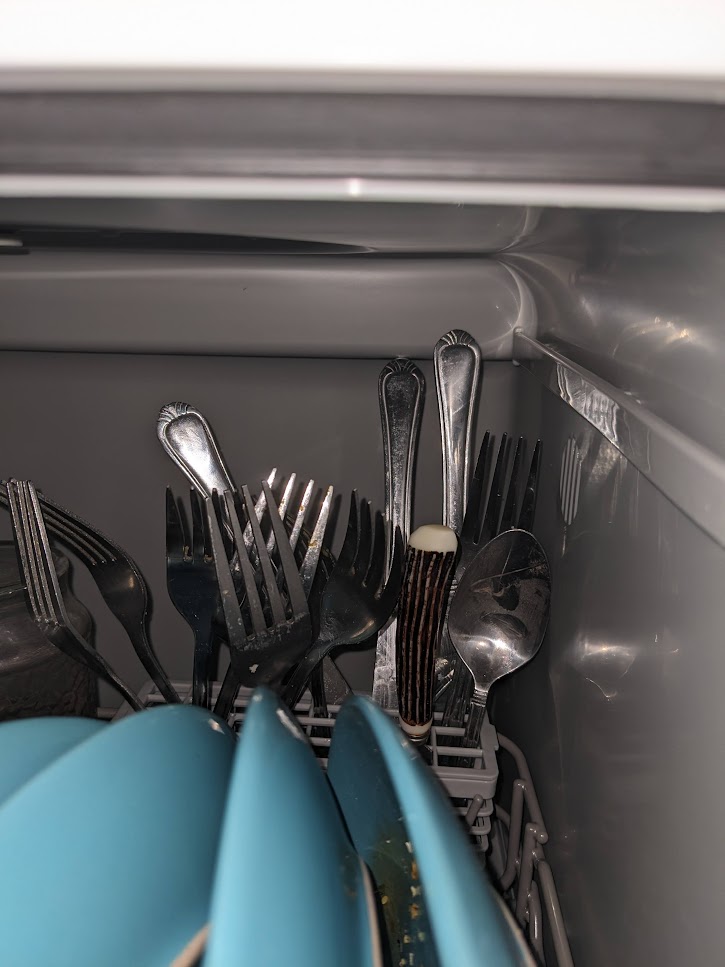

So it takes a little bit of finagling to get everything in there, but once I get caught up on dish debt I shouldn’t have nearly as much to run at once.
After powering it on, it asks to be filled with water if not using the hose hookup. The provided pitcher is 1.8L and the machine takes 5L to fill up, so it’s a bit more than 2 1/2 pitchers to get it filled up. The filler on top unfortunately causes some splashing while pouring it unless you pour it very slowly.
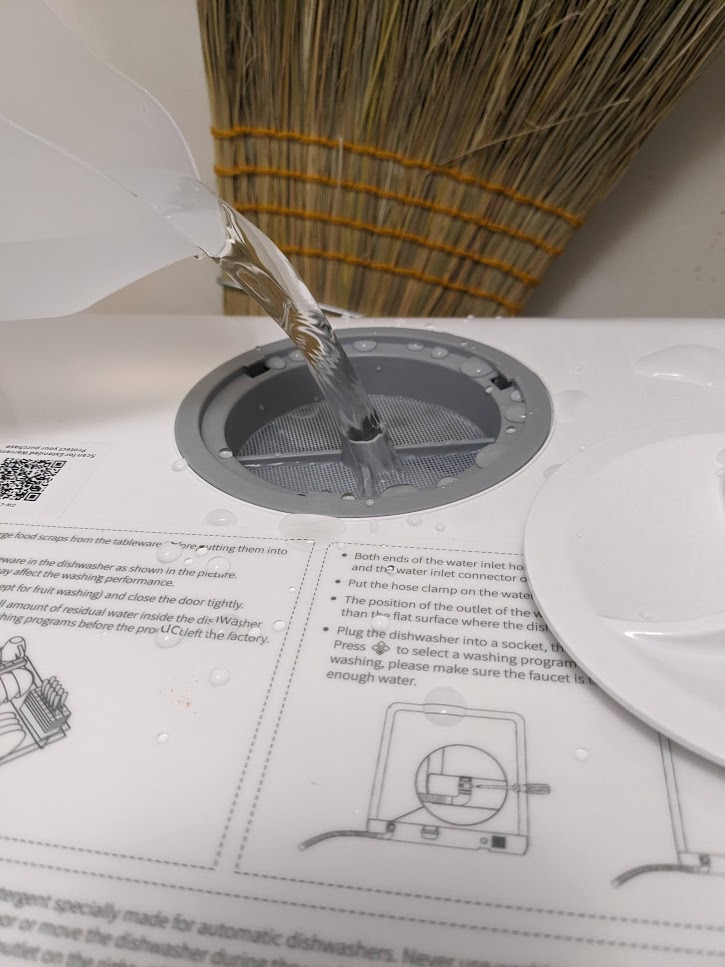
I ran this on the “normal” cycle, which takes 70 minutes to wash and 60 to dry.

The drain hose has an attached suction cup so that it doesn’t come out of the sink when draining, but the cup let loose and almost started spraying my countertops with water. Thankfully I was watching it; in the future I will just pin it down with a mug or something.

After the wash cycle, I pause the machine and take a look.
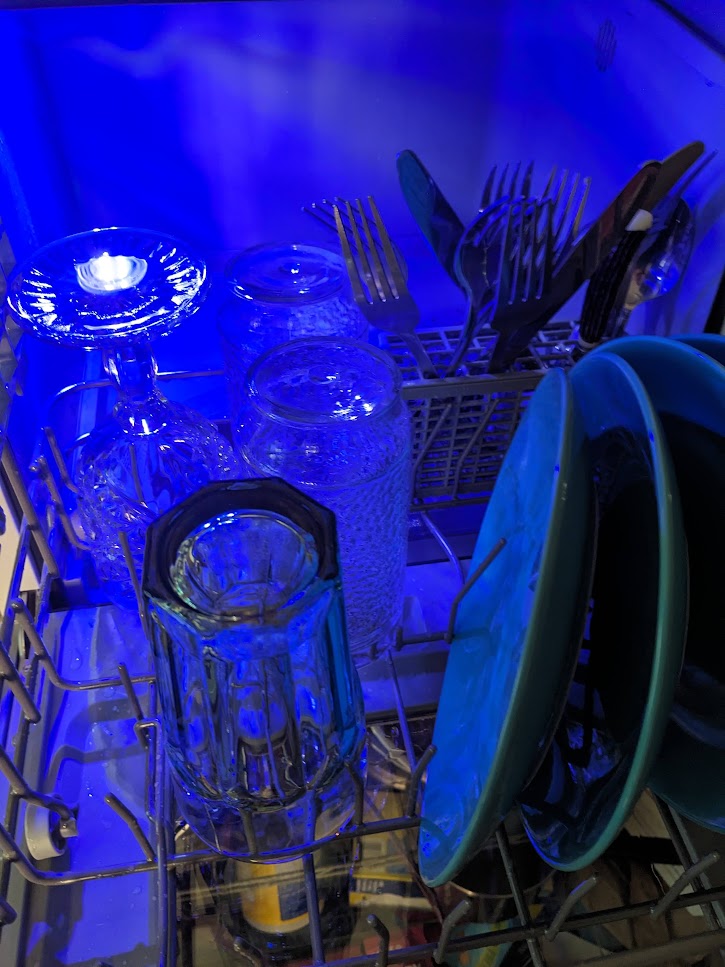
Everything is spotless, and most things are already fairly dry except for some water pooled on top of the upturned glasses and a little bit inside. I let it run the full drying cycle to see how it does.
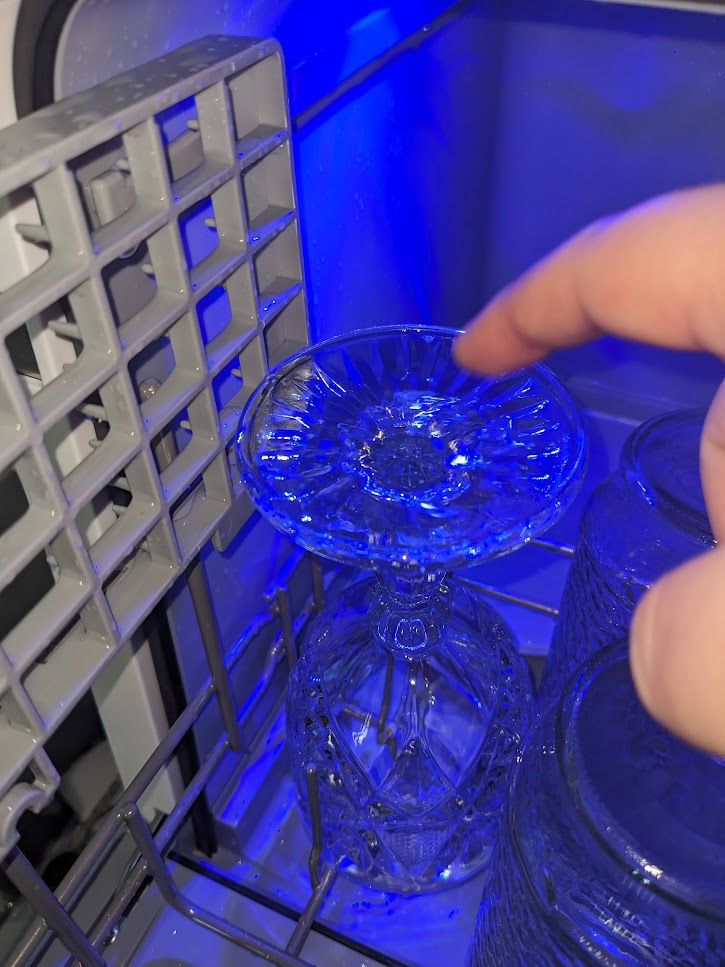
Unfortunately it didn’t completely dry off the tops, but I wouldn’t really expect it to. Since everything came out pretty dry to begin with, I think I’ll just forego the drying cycle and air dry in the future. This should also help save on power and heat – the normal wash cycle already heated up the whole kitchen by a couple of degrees, and in summertime I definitely will not want to heat up the kitchen even more by running the drying cycle for an additional hour.
That grid in the top left of the last image is another shelf that the manual seems to think is for mugs. I had it flipped out of the way to fit the glassware, and don’t think any of my mugs will fit up there, even the smaller ones.
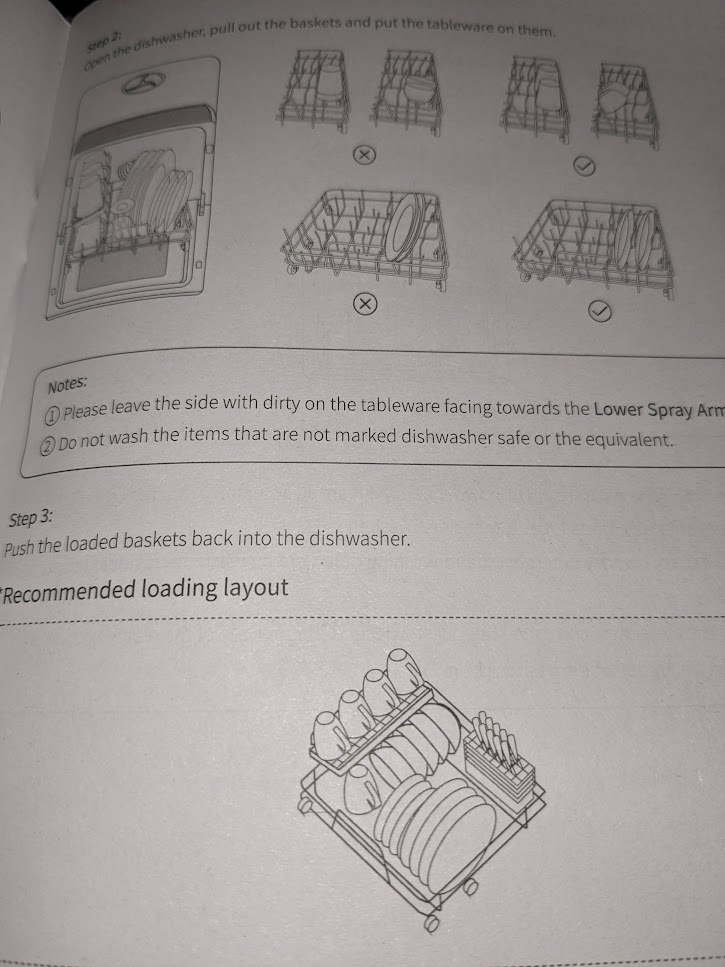
The box also contained a sheet of stickers, the energy guide sticker, and a basket for fruit washing (it has a fruit washing cycle). I’m not sure I would ever use the fruit washing cycle, especially after I’ve washed dishes in it, but it’s there.


The noise was comparable to an installed under-counter dishwasher, which, considering it is just sitting out in the open, I found to be reasonable. However, where it is currently sitting is directly on the opposite side of the wall that my bed is against, so I probably won’t run this immediately before going to bed.
Also, the drain hose didn’t completely empty, which I later realized was because gravity is a thing and the bottom of the machine is lower than the top of my sink. If I want to completely drain it I will need to use a bucket or something. This is not really a big deal.
I ran a second cycle, this time on “quick” which is 30 minutes of washing time. This included a pan that had stuck-on scrambled eggs, a few longer cooking spoons, a spatula, and a cheese grater with dried mozzarella stuck on it. I also managed to fit one of my full-sized plates into it by inserting it at an angle. No pictures this time, but everything came out reasonably clean, except for the outside of the pan (which had a little bit of egg spillover stuck to it; it was facing away from the main sprayer arm, so this wasn’t unexpected).
Considering how good a job the quick cycle did, and the decently dry results even before the drying cycle, I will probably run this on quick with no drying most of the time. There is no option to disable the drying cycle, it’s part of whatever cycle you select (except for fruit mode) but thankfully it does chime when it’s done washing and switches over to drying, and the cycle can be paused/cancelled easily. The chime is a pleasant tone and not too loud, but still audible from the next room.
Overall impressions: It’s great! This is going to save me a lot of time, even if it can’t wash everything I have (most of my larger pots and pans just will not fit at all) and it uses such a small amount of water compared to hand washing. The few problems it does have are minor enough to ignore or deal with, or my own fault (measuring, draining), and I think it’s a great option for small kitchens that don’t have room for an installed or portable floor dishwasher.
